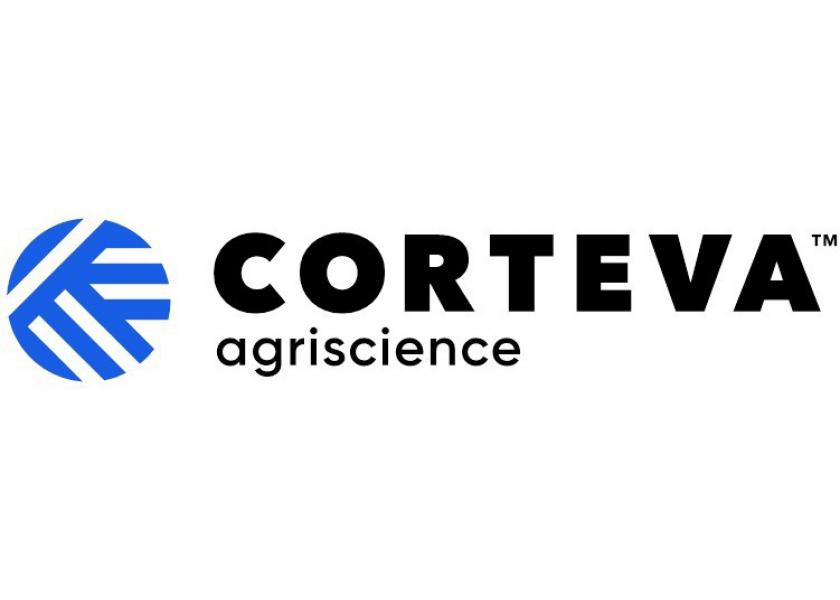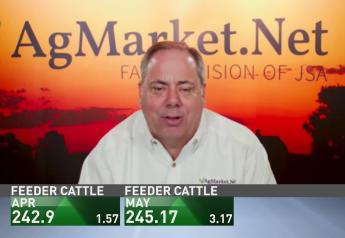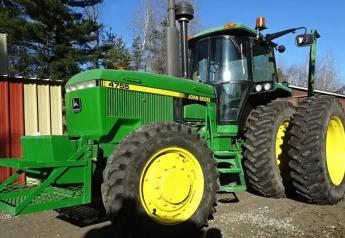What Corteva Leaders Say About The Future of Seed, Crop Protection and Digital Ag

Held in mid-September, Corteva hosted its annual Investor Day in Johnston, Iowa. Here’s what top executives had to say about their vision for Corteva in the near future.
1. A New Corteva Underfoot
“Corteva will look much different. It will be a much more streamlined and simplified company,” said CEO Chuck Magro. “We plan to do business in 110 countries. That's a reduction of about 35 geographies. We will only focus on markets where there is strong support for differentiated technology. About 20 of these countries we believe are what we consider must win. We also plan to narrow our product focus to crops that are relevant, large and differentiated technology behind them. We are expecting to reduce our AI portfolio by about 20%, as we deprioritize several crop protection commodity products.”
2. Biologicals Are A Must-win
“By 2035, we are expecting biologicals to make up 25% of the total crop protection market,” Magro said. “They will not replace synthetic chemistry, which remains as important tools for farmers to produce crops. However biologicals have a growing place in the market as complementary, sustainably advantages for farmers.”
Robert King, executive vice president, crop protection business unit, added “Today, the biologicals market makes about $9 billion total in the world. We expect that to grow by more than 3x about to 30 billion by 2035. Biologicals is an area that we need to play in, and we need to win if we're going to be the best.”
3. Shifts In Sourcing
Currently, Corteva has seven global AI sites and 10 regional formulation and packaging plants.
“To be competitive in today's ag chem world, we've got to pivot and approve our external manufacturing partnerships as well,” King says. “Today we're about 25% internal manufactured only so in other words, only 25% of our products are only made in our own plants. That will shift that to about 10%. We're going to be more dual source, which is going to give us better flexibility around the world to deliver this new model.”
The 10% remaining as internally manufactured will be materials considered high priority intellectual property. The company’s spinosym portfolio is given as an example.
King continued: “When you think about this end to end supply chain, we're going to make a structural shift away from being transactional and centralized.”
And King notes about $2 billion of Corteva’s crop protection revenue is from Chrinese-sourced AI, or about 25%. Of those, 85% are dual sourced from other regions.
“This isn’t just a cost decision—it’s a risk management decision as well. We're managing the risk and the resiliency of our supply chain as we move forward,” King says.
4. Sustainabilty
In addition to Corteva’s carbon program, the leaders highlighted the company’s commitment to its sustainability parameters and goals.
“The perfect example of this is our Enlist herbicide. It was the first product to comply with the EPA new Endangered Species Act approach, setting a new standard, and providing farmers the tools they need to produce crops, while reducing the risks to wildlife and habitats,” Magro said.
The leaders noted how of the 10 new crop protection product launches from 2017 to 2024, 90% meet Corteva’s sustainability criteria.
5. 3 $1 Billion Portfolios
Enlist: The company says it has captured over 45% of the US market since its launch in 2019.80% of e3 soybeans are applied with Enlist herbicide. The company says they have surpassed 50% adoption in the eastern Corn Belt with forecasts for more than 50% market share coming in the central Corn Belt in 2023. Half of Corteva’s branded seed volume was Enlist 3, and they forecast 90% conversion by 2025.
Spinosys portfolio. Company leaders says this is a leading propriety platform for Corteva and referenced the manufacturing expansion in Michigan to increase capacity by 50%. The Jenvelva and Qalcova active ingredient products will surpass $1 billion in sales next year.
Fungicides: Magro said: “We have the three naturally inspired fungicides that are in the market now and will come into the market in the next three to five years. We believe that portfolio of fungicides have a sustainability advantage with leading edge technology.”
6. Corteva Feeds Its Own Products
Corteva plans to launch 10 new AIs by 2035. Magro says the entire pipeline has a peak value of $24 billion.
Sam Eathington, EVP, Chief Technology and Digital, highlights the company’s strategy to transition away from biotech trait royalties by the end of the decade.
“New breeding techniques are really a new chapter in the story of plant genetics. I believe this technology is going to be as transformative as biotechnology has been to the seed industry,” Eathington says. “We've used gene editing technology to create a wide range of changes in plants from several plants architecture adjustments, like we do stature corn, to the complex phenotypes like grain yield.”
7. Change, Yet Consistency, In Seed
Of the immediate future, Tim Glenn, Executive Vice President, Seed Business Unit of Corteva Agriscience, said: “Essentially we will have our orders in place by the end of December. So, the next 90 days are critical.”
Looking a bit farther out, Glenn says Corteva has four focuses for the seed business:
- Focused growth
- Product excellence
- Customer experience
- Margin expansion with proprietary technology
Seed represents 54% of revenues. In 2018 Corteva first launched the Brevant brand in Brazil—a seed line specific for ag retail sales. It was then launched in the U.S. in 2020 for the 2021 planting season. One-third of corn and soybean sales in the U.S. are via the retail channel. The company says it has reached its goals for sales for Brevant to date.
Recently the company has closed 27 seed production locations around the world.
8. Crop Protection Has to ‘Move the Needle’
King said his team is applying focus and a simplified approach as they move forward with products for five crops (corn, soybeans, cereals, fruits & vegetables, and rice) in 20 countries. That means the company is exiting 12 active ingredients and 400 formulations.
“When you begin to look at the complexity involved with the 20% of our AIs we're going to exit, and you say ‘how you figure that out.’ Well, it's the lower margin ones that aren't moving the needle, and we don't see a way to get them up to the level that they need to be,” King says.
Leadership forecasts by 2025, the company will have a portfolio that is 2/3 differentiated. Crop protection represents 46% of company revenues.
“It’s important to realize that the largest gross profit, and the largest gross margin for crop protection is fruits and vegetables. It makes up 25% of the $65 billion global crop protection market,” King says noting Corteva has about 9% marketshare today with growth goals.
9. Digital Mindset
“In the early days, the entire industry thought that there would be a huge value to unlock by selling software as a service. and many companies went into that space. I think we've all realized that that's very difficult,” Magro said. “We're rethinking our digital strategy.”
Corteva is moving away from selling software as a service (notably, sunsetting Granular Agronomy) and reimagining Granular Insights. Magro sees a future of digital tools integrated into the seed and crop protection platforms.
“We want to help growers make informed decisions, unlocking yield which will be key. The data we can bring to growers will drive value,” Magro said.
Eathington added, “An example is the seed platform where the advantage we have is our internal knowledge about how products perform with genetic information along with the ability to get farmer data. There's a number of platforms out there that are making it fairly simple to assemble and bring data together once you have that permission from the farmers to access that data. And that's where especially in the Pioneer brand with a connection via that trusted advisor we have with our agents, it really lets us have that touch with the farmers, and be able to access and get that information.”
10. The Future Of Product Volumes
Magro was asked specifically about spot-spray technologies that are being introduced in the market.
“Anytime we can try to do more with less, we were all over that as an organization,” Magro says. “What we're trying to do with our chemistry and biological products is to drive low use rate with some of our new products like Reklemel, for example, you need one sugar pack on an acre. And so you can use standard application technology. I think there's going to be multiple solutions and options, and we want to give growers a scientific answer. The Deere See and Spray technology is pretty interesting; it’s quite expensive. From our perspective, if we can drive those chemistry use rates down really low and still accomplish the efficacy levels that they need. But using standard equipment. I think that's another very good option.”







